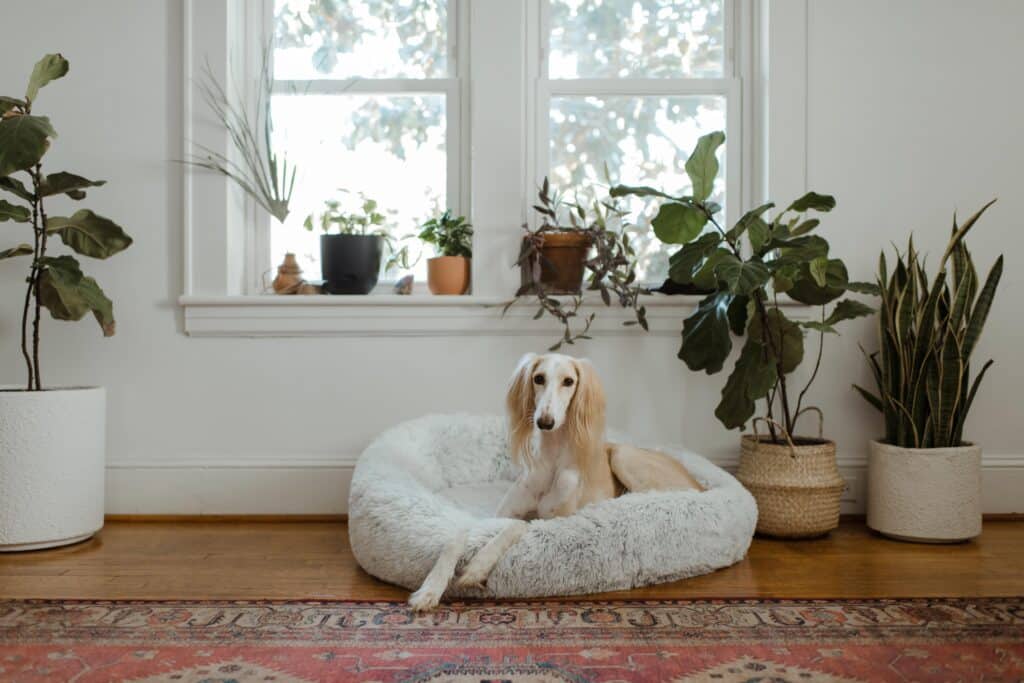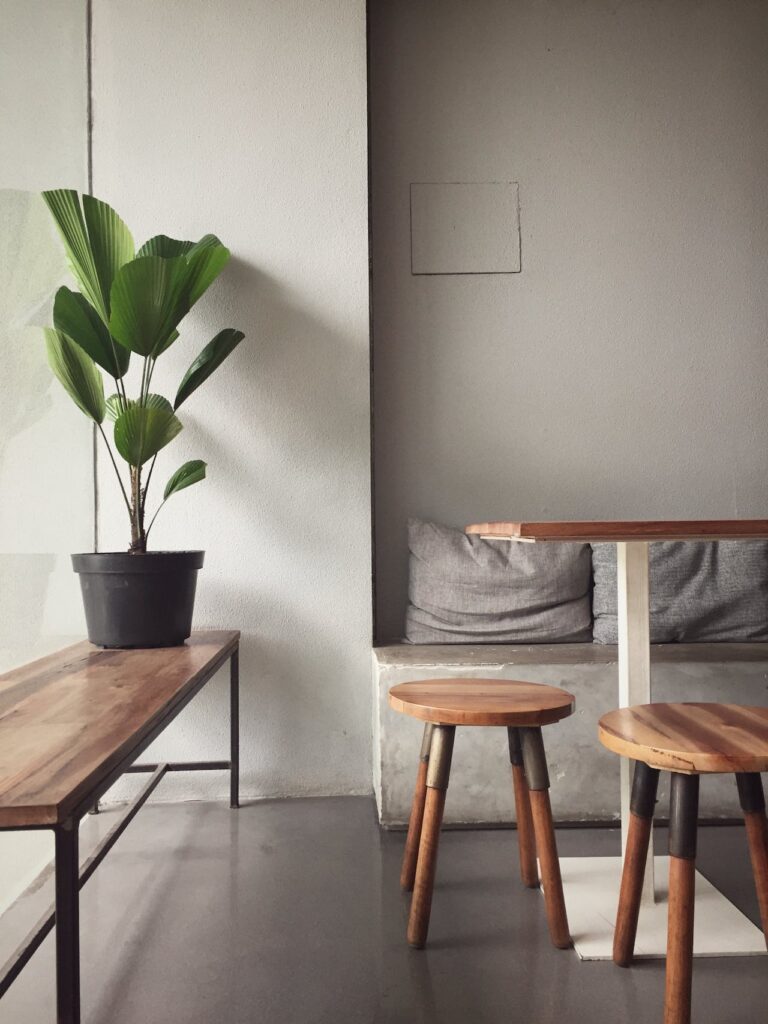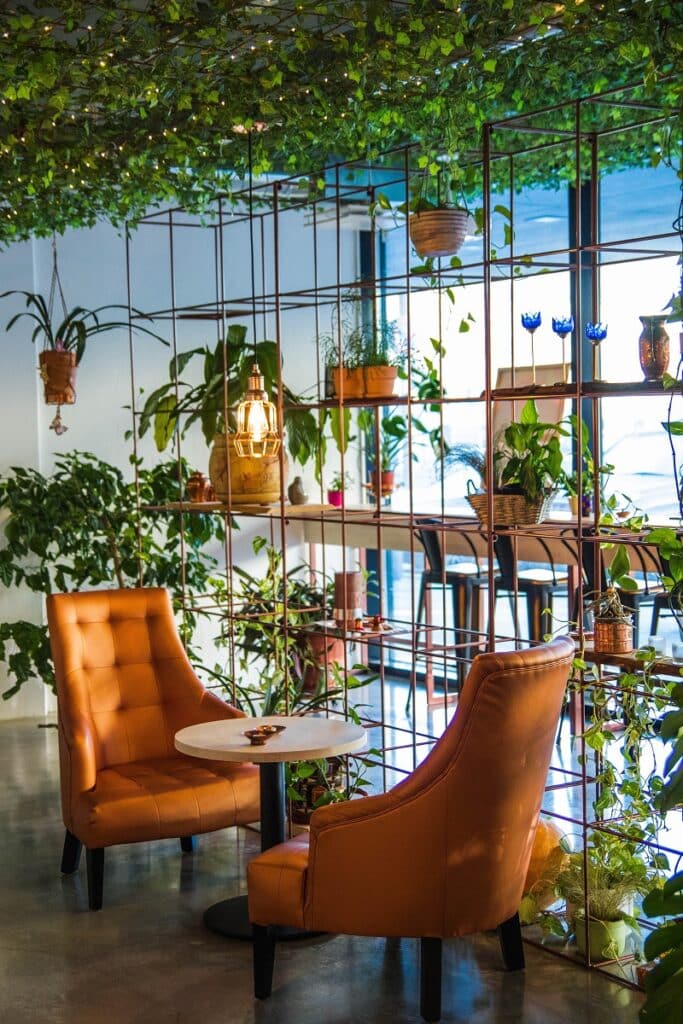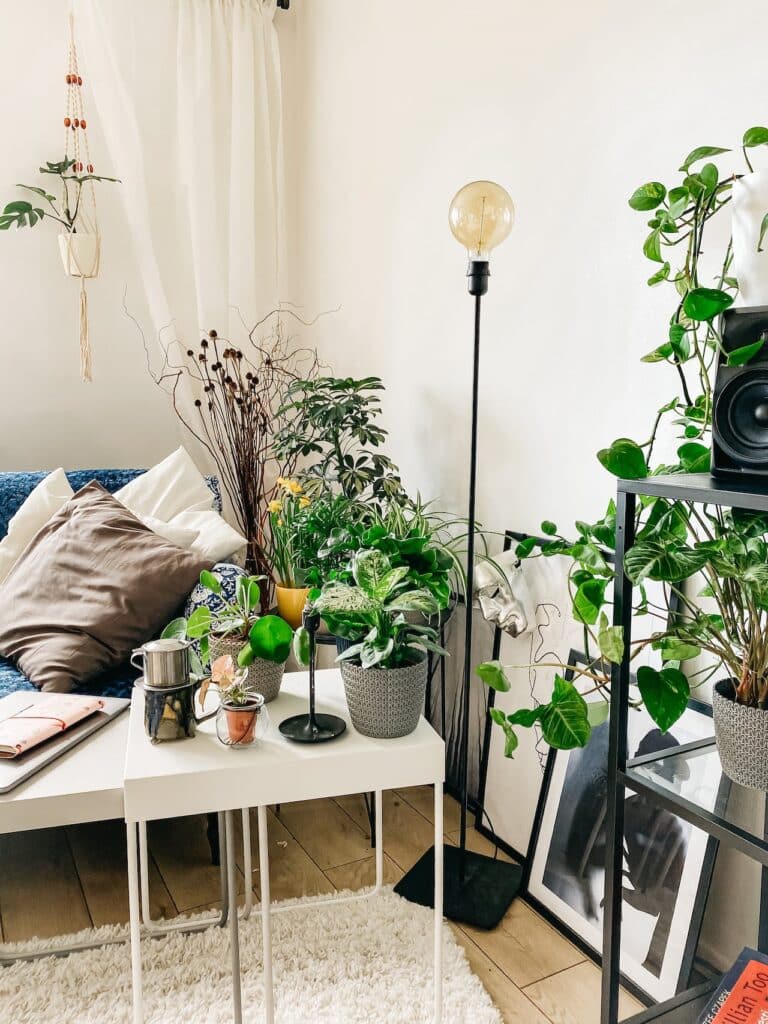Indoor plants have become a popular addition to many homes, adding a touch of nature and beauty to any living space. However, have you ever wondered why these lovely plants seem to attract pesky bugs? In this article, we will explore the top reasons behind the occurrence of bugs on indoor plants, shedding light on this common issue that plant enthusiasts face. So, if you’ve ever found yourself battling tiny invaders on your plant leaves, keep reading to uncover the secrets behind their attraction and discover simple solutions to keep your indoor oasis bug-free.

Understanding the Types of Indoor Plant Bugs
Identifying common indoor plant pests
When it comes to indoor plant bugs, it’s important to be able to identify the common pests that may affect your beloved plants. Some of the most common indoor plant pests include aphids, mealybugs, spider mites, fungus gnats, and scale insects. Each of these bugs has unique characteristics and feeding habits that can cause damage to your plants if not addressed promptly. By knowing how to recognize these common pests, you can take appropriate measures to prevent and control infestations.
Lifecycle of indoor plant bugs
Understanding the lifecycle of indoor plant bugs is crucial in effectively managing infestations. Most indoor plant bugs go through various life stages, including egg, nymph, and adult. The duration of each stage varies depending on the type of bug and environmental factors such as temperature and humidity. It’s important to note that bugs can reproduce quickly, which can result in a rapid increase in population if not properly managed. By understanding the lifecycle of indoor plant bugs, you can target their vulnerable stages and take action to interrupt their breeding cycle.
Differentiating harmless and harmful bugs
Not all bugs found on indoor plants are harmful. In fact, some bugs can even be beneficial as they feed on pests that damage the plants. Ladybugs and lacewings, for example, are known to prey on aphids and other soft-bodied insects. However, it’s crucial to be able to differentiate between harmless and harmful bugs. Harmful bugs typically cause visible damage to the leaves, stems, or roots of plants, while beneficial bugs rarely cause any harm. By learning to identify which bugs are harmful, you can take the necessary steps to control their population and protect your indoor plants.
Impact of Humidity and Temperature
Attractiveness of indoor humidity to bugs
Indoor plants create a microclimate that often provides a favorable environment for bugs. The indoor humidity resulting from regular watering can attract certain types of bugs, especially those that thrive in moist conditions. These bugs may include fungus gnats and certain types of mites. To reduce humidity levels and deter these bugs, ensure proper drainage of your potted plants and avoid overwatering.
Impact of controlled indoor temperature on bug growth
Maintaining a controlled indoor temperature not only benefits the growth of your indoor plants, but it also affects the growth and development of bugs. Most bugs thrive in warm temperatures, so it’s essential to keep your indoor environment within a range that is less favorable for their survival. Regularly monitoring and adjusting the temperature can help create an environment that discourages bug growth and infestation.
Plants that generate high humidity
Certain indoor plants are known for their high transpiration rates, which means they release more moisture into the air. These plants, such as ferns and tropical species, can increase humidity levels in their surroundings, making them more appealing to moisture-loving bugs. It’s important to consider the moisture requirements of different plants when creating an indoor garden and ensure proper ventilation to prevent excessive humidity buildup.

The Role of Light and Plant Bugs
Attraction of bugs to artificial light
Artificial light sources, such as lamps or grow lights, can attract bugs towards your indoor plants. Many bugs, including nocturnal insects like moths, are naturally drawn to light sources. When placed near indoor plants, these light sources can inadvertently attract bugs, leading to potential infestations. To minimize the attraction of bugs to artificial light, consider placing light sources away from your plants or using bug-repellent bulbs.
Ways light contributes to bug life cycle
Light plays a significant role in the life cycle of bugs, affecting their feeding patterns, reproduction, and overall behavior. For instance, long periods of exposure to light can disrupt the natural diurnal rhythm of certain bugs, making them more active at night when they could potentially cause more damage to your plants. Conversely, insufficient light can also have an impact on bug populations, as it may affect their ability to find food sources or reproduce. Striking a balance between light intensity and duration can help create an environment less conducive to bug survival.
Managing indoor lighting to control bugs
Managing indoor lighting is crucial when it comes to controlling bug infestations. By adjusting the placement and intensity of light sources, you can minimize the attraction of bugs to your plants. Additionally, using timers to regulate the duration of light exposure can mimic natural lighting conditions and help prevent disruptions in bug life cycles. It’s also beneficial to regularly inspect your indoor plants for any signs of bug activity and take appropriate measures if an infestation is detected.
Water and Bug Attraction
Water content in plants attracts bugs
The most crucial element for the growth and survival of plants is water. But it can also act as a magnet for insects. Many bugs are drawn to the moisture present in soil and on plant leaves. They rely on this water source for nourishment, hydration, and reproduction. Fungus gnats, particularly, have a notorious affinity for the damp conditions created by excessive watering or inadequate drainage. By employing proper watering techniques, such as watering the soil directly and avoiding splashing water on the leaves, we can effectively minimize the attraction of insects.
Overwatering and bug infestations
Overwatering your indoor plants can create a favorable breeding ground for bugs. Excess moisture in the soil can lead to root rot and other plant stress factors, weakening the plants and making them more susceptible to bug infestations. Overwatering also increases humidity, attracting moisture-loving bugs such as fungus gnats and certain types of mites. It’s important to water your plants appropriately, allowing the soil to dry out between waterings to discourage bug infestations.

Impact of water stagnation
Stagnant water, whether in the saucers beneath plant pots or stagnant water sources within the indoor environment, can attract bugs. Mosquitoes, for example, are notorious for breeding in standing water. To prevent bug attraction and infestations, it’s crucial to regularly empty and clean saucers, avoid leaving containers of standing water in the vicinity of plants, and ensure proper drainage in your indoor gardening setup.
Fertilizers and Plant Bugs
The relationship between plant nutrients and bug survival
Fertilizers provide essential nutrients to plants, promoting their growth and overall health. However, the presence of nutrients can also influence bug survival and reproduction. Bugs require certain nutrients for their own growth and survival, and when these nutrients are readily available in the plants they infest, their populations can thrive. It’s important to strike a balance between providing adequate nutrition to your plants and avoiding excessive fertilization that could attract bugs.
Impact of organic and inorganic fertilizers on bugs
Both organic and inorganic fertilizers can have an impact on bug populations. Organic fertilizers, such as compost or manure-based products, can attract bugs due to their organic matter content. On the other hand, inorganic fertilizers, which often contain high concentrations of specific nutrients, can provide an abundant food source for bugs. It’s advisable to choose fertilizers carefully and apply them in moderation to avoid unintentionally fostering bug infestations.
Using fertilizers wisely to mitigate bug infestations
To mitigate bug infestations, it’s important to use fertilizers wisely. Consider the specific nutrient requirements of your plants and choose fertilizers accordingly. Aim for a balanced nutrition approach rather than relying solely on excessive fertilization. Regularly monitor your plants for any signs of nutrient deficiencies or excesses, as these conditions can make the plants more susceptible to bug infestations. By using fertilizers wisely, you can promote healthy plant growth while minimizing bug attraction.
Plants Health Attraction to Bugs
Sick plant and bug infestations
Sick or stressed plants are more vulnerable to bug infestations. When plants are stressed due to factors such as inadequate light, nutrient deficiencies, or diseases, they emit chemical signals that can attract bugs. Weakened plants are often unable to defend themselves effectively against bug attacks, which can lead to rapid infestation. Maintaining the overall health and vigor of your indoor plants through proper care and maintenance can help prevent bug attraction and infestations.
Role of plant stress in attracting bugs
Plant stress, whether caused by environmental factors or disease, can trigger a cascade of physiological responses that make plants more attractive to bugs. Stressed plants may produce altered chemical compounds, emit volatile substances, or display changes in their physical appearance, all of which can act as signals for bugs. By minimizing stress factors and providing optimal growing conditions, you can reduce the likelihood of attracting bugs and ensure the long-term health of your indoor plants.
Signs of an unhealthy plant attracting bugs
Unhealthy plants often exhibit visible signs that can attract bugs. Look out for wilting leaves, yellowing or browning foliage, stunted growth, or the presence of lesions or spots on the leaves. These signs indicate that something is amiss with the plant’s health and can serve as an invitation for bugs to infest. Regularly inspecting your indoor plants and addressing any signs of plant health issues promptly can help prevent bug attraction and infestations.
How Potted Soil Attracts Bugs
Role of soil components in bug infestation
Potted soil can provide a favorable environment for bugs due to its composition. Many bugs, such as fungus gnats, lay their eggs in the soil, where the larvae can feed on organic matter and plant roots. Some bugs may even use the soil as a hiding place during certain stages of their life cycle. The organic matter and moisture present in potted soil make it an attractive habitat for bugs. Proper soil management, including regular inspection, adequate drainage, and sterilization, can help deter bug infestations.
How overuse of potting soil fosters bug growth
Overusing potting soil without proper sterilization or replacement can lead to an accumulation of pests and their eggs. Bugs present in previously used potting soil can survive and multiply, posing a risk of infesting new plants. Additionally, the buildup of organic matter in old potting soil can attract bugs seeking a food source. It’s advisable to refresh potting soil periodically and sterilize it before reuse to minimize the potential for bug growth and infestations.
Importance of sterilized soil
Using sterilized soil is crucial in preventing bug infestations. Sterilizing soil involves heating or treating it to kill any pests, diseases, or weed seeds present. Sterilized soil reduces the risk of introducing bugs that may come from any contaminated organic matter or remnants of previous infestations. By using sterilized soil, you can provide a clean and pest-free environment for your indoor plants, minimizing the chances of bug attraction and infestations.
Understanding Bug’s Food Preference
Insect feeding habits and how indoor plants cater to them
Different bugs have varying feeding habits and preferences. Some bugs are sap-suckers and feed on the fluids within plant tissues, while others are leaf-chewers and consume plant leaves. Indoor plants can cater to these feeding habits by providing a diverse range of suitable hosts. Certain plants, such as ferns and begonias, have tender foliage that appeals to sap-sucking bugs, while others, such as lettuce or cabbage, may be more attractive to leaf-chewing bugs. Understanding the preferences of different bugs can help you choose appropriate plant species and minimize bug attraction.
Types of bugs attracted to various plant species
Different plant species can attract different types of bugs. For example, rose plants are often susceptible to aphid infestations, while spider mites tend to target houseplants like spider plants or palms. Each bug species has its own preferences regarding feeding sites, plant texture, and even flower structures. By researching the specific bugs that are commonly associated with your chosen plant species, you can be better prepared to monitor and manage potential infestations effectively.
Bug’s food selection and survival strategy
Bugs select their food sources based on various factors such as nutrient content, availability of preferred host plants, and environmental conditions. Some bugs have evolved to specialize in feeding on specific plant species, while others have a broader range of hosts. Additionally, bugs may employ survival strategies, such as the secretion of sticky substances or the curling of leaves, to enhance their feeding efficiency and protect themselves from predators. Understanding bugs’ food selection and survival strategies can help you anticipate their behavior and implement appropriate control measures.

Role of Plant Proximity in Bug Infestations
How close planting encourages bug spread
Planting indoor plants in close proximity can create an ideal environment for bug spread and infestation. Bugs can quickly move from one plant to another, especially if they are of the same species or closely related. Dense planting limits airflow and sunlight penetration, leading to increased humidity, favoring bug survival and reproduction. Additionally, bugs can hide and thrive within the dense foliage, making it difficult to detect and control infestations. Proper spacing between plants allows for better air circulation, reduces the risk of bug spread, and facilitates pest management.
Drawbacks of dense planting in indoor gardening
While dense planting may initially give your indoor garden a lush appearance, it has drawbacks regarding bug control. Dense foliage creates ideal conditions for bugs by providing hiding spots, reducing air circulation, and limiting access for pest control measures. Bugs can easily move from plant to plant within a densely planted garden, making it challenging to contain infestations. Adequate spacing between plants promotes healthier growth and allows for effective bug monitoring and intervention.
Preventing bug infestation through plant spacing
Proper plant spacing is essential for preventing bug infestations and maintaining plant health. It’s important to research the recommended spacing requirements for each plant species and follow those guidelines when arranging your indoor garden. Sufficient spacing allows for better airflow, reduces the risk of excessive humidity buildup, and makes it easier to inspect and treat individual plants for bugs. By providing adequate space between plants, you can minimize the potential for bug spread and infestations while promoting optimal plant growth.
Bug Prevention and Control measures
Preventive practices for indoor plant bugs
Prevention is key when it comes to managing indoor plant bugs. Implementing a few simple practices can significantly reduce the risk of bug infestations. Regularly inspect your plants for any signs of pest activity or damage. Remove any dead or decaying plant material, as bugs are often attracted to these sites. Additionally, maintain a clean indoor environment by regularly wiping down plant leaves and surrounding areas to eliminate any lingering bugs or eggs. By practicing preventive measures, you can proactively reduce the likelihood of bug infestations.
Organic and chemical bug control methods
When it comes to controlling indoor plant bugs, there are both organic and chemical methods available. Organic methods include the use of natural bug deterrents such as neem oil, insecticidal soaps, or homemade remedies like vinegar solutions. These methods are generally considered safer for both plants and humans but may require more frequent application for optimal effectiveness. Chemical methods involve the use of insecticides specifically formulated for indoor plant bug control. It’s important to use chemical pesticides according to the manufacturer’s instructions and consider their potential impact on beneficial insects and the environment.
Regular monitoring and quick response to bug infestations
Regular monitoring of your indoor plants is crucial for early detection of bug infestations. Pay close attention to any signs of bug activity, such as discolored leaves, wilting, or the presence of pests themselves. If you notice any signs of infestation, it’s important to respond quickly. Start by removing any heavily infested plants or plant parts to prevent the spread of bugs. Depending on the severity of the infestation, you can employ various control methods including physical removal, insecticidal treatments, or the introduction of beneficial insects. Prompt action can help prevent further damage and minimize the impact of bug infestations on your plants.




